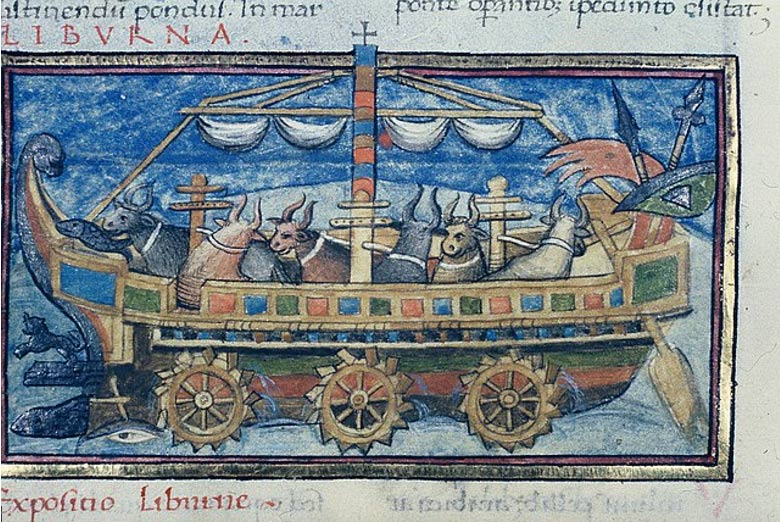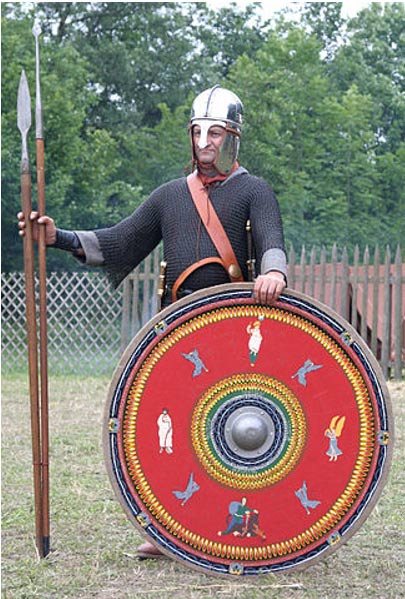The Incredible War Machines of De Rebus Bellicis

De Rebus Bellicis is a fascinating work from the late Roman Empire, written around the 4th or 5th century AD. This text, written by a mysterious author, proposes a variety of military innovations meant to strengthen the Roman army. The incredible part? Many of these designs were well beyond their time. The text was written in a period during which the Roman Empire was experiencing more pressure than ever before from both eternal invasions and internal turmoil. The Empire needed new ways to defend itself and maintain its dominance, and this text’s author thought he had the solution. “De Rebus Bellicis” offers a unique glimpse into the inventive military strategies and technological aspirations of the era, reflecting the ingenuity and adaptability of Roman military thinkers.
- Forgotten Technology: Ten Secrets We Have Lost
- Constantinople, 1453: The Final Fall Of The Roman Empire
De Rebus Bellicis – Innovative Solutions To Serious Problems
Historians aren’t sure exactly when De Rebus Bellicis (On the Things of Wars) was written, nor who wrote it. It was most likely written during the late Roman Empire, a period of significant upheaval and transformation in Rome. It’s mostly accepted that the work was written in the 4th or 5th century AD.
It’s clear it was written after the death of Constantine I in 337 because it mentions his death, which is helpful. We also know it was written before the fall of the Western Roman Empire in 476 because that’s literally the kind of thing the text’s author was trying to avoid.
Some believe the text was written after 378 because it seems to refer to the Battle of Adrianople and the serious threat posed by the barbarian tribes. It also uses the plural of the word “princeps” which was the emperor’s title. This hints that the text was written after the death of Theodosius I in 395 AD and the empire’s split between Honorius and Arcadius.
- The Roman Invasion Of Anglesey And The Fall Of The Celtic Druids
- The Marian Reforms: A Thoroughly Modern Roman Army

As to who wrote it? That’s even less clear. It’s believed the author was a high-ranking military official or engineer, given the text’s technical nature and understanding of military doctrine. However, it seems strange that such a figure wouldn’t attach their name to such a work. Some of the book’s more fanciful entries also call this theory into question.
The why of the text, thankfully, is much easier to work out. It was written as a response to the dire military circumstances of the time. The Western Roman Empire was particularly vulnerable, with its frontiers under constant threat from groups such as the Goths, Vandals, and Huns. This period also saw significant internal decay, with political corruption and power struggles further weakening the empire’s ability to defend itself.
De Rebus Bellicis was most likely a desperate yet creative attempt to revive the fortunes of the once-great Roman military. Desperate times call for desperate measures and the proposed innovations were meant to address the empire’s pressing defense needs and restore some measure of its former glory. Unfortunately, it seems to have been widely ignored at the time.
The Wild Machines of the De Rebus Bellicis
The De Rebus Bellicis is mostly known for its detailed descriptions of various potential military machines and devices. They highlight the inventive spirit of some of Rome’s engineers, even if some of the designs themselves were fanciful. The text includes a range of innovative proposals designed to enhance the effectiveness and mobility of the Roman military.
- Armored Warships: One of the most impressive proposals is that of armored warships. One of the standout proposals is for armored warships. These vessels were designed with protective coverings to shield them from enemy projectiles, offering a significant advantage in naval battles. This innovation aimed to protect the crew and maintain the ship’s operational capability even under heavy fire.
- Enhanced Catapults and Ballistae: The Romans had long made use of impressive catapults and ballistae during sieges, but the author suggests improvements to traditional siege engines. Most of these suggested hypothetical ways to increase the range and power of such weapons, allowing the Roman forces to inflict greater damage on enemy fortifications from safe distances.
- Animal-Powered Devices: Part of these improvements was the idea of using animals to power Rome’s war machines. It suggests Oxen could be used to draw a more mobile version of the ballista, mobile siege towers, and battering rams. There was even a suggestion of an Oxen-powered paddle boat that was well ahead of its time.
- Portable Bridges: The text describes portable bridges that could be quickly assembled and disassembled. These would allow for rapid river crossings, enabling troops to move swiftly and ambush unsuspecting enemies. This mobility was crucial for outmaneuvering opponents and securing strategic advantages. This is probably why such bridges have been a staple of modern warfare for decades.
- Armored Wagons: Finally, the author proposes the use of armored wagons. These mobile fortifications would protect infantry and archers while allowing them to advance on enemy positions. The wagons could also serve as temporary defensive structures, providing cover during battles.

Technological and Strategic Suggestions
On top of these machines, the text also offers several technologies and strategic suggestions aimed at enhancing the overall effectiveness of the Roman military. Much like the machines, these range from the fanciful and impossible for the time to being actually useful.
- Improved Fortifications: The author is clearly a proponent of bigger means better when it comes to fortifications. They argue that Rome’s existing fortifications needed to be bulked up while new ones needed to be built. Thicker walls, deeper moats, and advanced structures like towers equipped with ballistae and catapults all make an appearance. These upgrades were intended to make Roman fortresses more resistant to sieges and attacks, especially against the likes of the Barbarian tribes.
- Protective Gear for Soldiers: The author also highlights the importance of soldier safety. The text recommends that soldiers be equipped with better protective gear. This includes improved helmets, body armor, and shields designed to offer greater protection without compromising mobility. Enhanced gear would not only protect soldiers from enemy projectiles but also boost their confidence and effectiveness in battle.
- Mobile Defensive Units: The concept of mobile defensive units is another strategic suggestion. These units, equipped with the aforementioned armored wagons and portable bridges, could respond quickly to threats, providing rapid reinforcement to vulnerable positions. The ability to swiftly deploy defensive units would help in countering surprise attacks and maintaining control over critical areas.
- Efficient Supply Lines: The author emphasizes the importance of maintaining efficient supply lines to ensure that troops are well-provisioned. Recommendations include the construction of secure supply depots and the use of fast, reliable transport methods to move supplies. Efficient logistics would be crucial for sustaining long campaigns and ensuring that Roman forces remained operational even in hostile territories.
- Use of Psychological Warfare: Perhaps most impressively, the text touches on the use of psychological warfare to demoralize enemies. This could involve the strategic use of intimidating war machines, loud battle cries, and deceptive tactics to create confusion and fear among opposing forces.
The biggest takeaway from the author’s suggestions is that they believed the Roman army needed to change. It had been a mighty power for centuries but had been allowed to grow complacent as well as weakened by Rome’s ailing economy. The author sought to create a more resilient and adaptable Roman military capable of meeting the diverse challenges of the time.

Conclusion
De Rebus Bellicis’ historical significance doesn’t really lie in the machines it proposes. Most of them verged on the fantastical. Sure, the author’s vision foreshadowed later military developments; for example, the idea of armored wagons and portable bridges can be seen as precursors to mobile fortifications and engineering corps used in medieval warfare. The emphasis on improved protective gear for soldiers also laid the groundwork for advancements in personal armor throughout history. This is impressive, sure, but the text did little to help Rome at the time.
Instead, its value as a historical text lies in how it portrays Rome at the time of writing. It offers valuable insight into the mindset of Roman military leaders during a period of decline. It highlights their willingness to explore fresh solutions and adapt to changing circumstances. This adaptability and forward-thinking approach are key factors that contributed to the longevity of the Roman Empire, even in its later stages. Ultimately, “De Rebus Bellicis” exemplifies the importance of innovation and adaptation, themes that remain relevant across various fields today.
